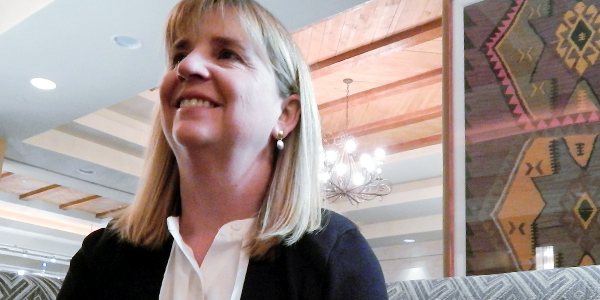MISO and SPP regulators are close to asking the RTOs for improvements to transmission operations on their seam as their market monitors wind down a study on the subject.
The short list of recommendations could arrive at an opportune time, with both RTOs signaling a willingness to usher in a new era of cooperation.
The Organization of MISO States (OMS) and SPP’s Regional State Committee (RSC) will discuss which recommendations could be most beneficial when their Seams Liaison Committee (SLC) meets on Aug. 10 and Sept. 14. Texas Public Utility Commission Chair DeAnn Walker, who leads the RSC side of the SLC, said July 27 that the committee is moving from the study phase to recommendation selection.
The MISO Independent Market Monitor and the SPP Market Monitoring Unit have recently summarized what they believe are the more effective actions the RTOs can take based on the study.
The SLC has indicated it will urge the RTOs to work together and quickly apply the easiest fixes that don’t entail major software upgrades. The improvements could include implementing a test based on the available flow relief an RTO can provide the other, an automated means to control power swings on constraints, and better testing and activation of flowgates near the seam.
The monitors said the RTOs cause large power flows on each other’s systems. Better managing them could save more than $30 million of the $150 million in annual congestion costs that the RTOs’ flowgates have accrued.
An Age of Teamwork?
SPP CEO Barbara Sugg has prioritized a better relationship with MISO since assuming her leadership position in January. That could bode well for the RTOs’ willingness to implement seams improvements, should the SLC recommend them.
During SPP’s quarterly stakeholder meeting July 27, Sugg said she’s “decided to take ownership of [seams issues] and work directly with MISO.” Sugg, joined by COO Lanny Nickell, has met several times with MISO CEO John Bear and President Clair Moeller.
“I have high hopes for the two companies working together to resolve issues on the seams and that the discussions will be very beneficial to both sides,” Sugg said.
“I commend her for working with John Bear on that relationship, which quite frankly has been lacking in the past,” Walker told SPP stakeholders. “Part of a goal of mine — and some of that has already been accomplished — has been better interaction between MISO and SPP staff, and now the boards.”
SPP Board Chairman Larry Altenbaumer concurred, saying the SLC “was a bit of a catalyst to try and foster an improved relationship at all levels with SPP and MISO.”
MISO also confirmed it was meeting with SPP senior leadership to “discuss opportunities to work more collaboratively on key seams items,” according to spokesperson Allison Bermudez. She said MISO looks forward to providing feedback on the recommendations and would possibly route some of them to stakeholder groups for solution development.
The monitors’ study also concluded that SPP should improve its modeling of MISO’s market-to-market (M2M) constraints. MISO, on the other hand, should eradicate its generator shift factor for low-voltage constraints and M2M constraints, the study said.
But the monitors didn’t find significant value in a joint dispatch model, saying the RTOs might save about $17 million per year, or 0.1% of the region’s total production costs. MISO Monitor David Patton said he believes that the benefits of joint dispatch aren’t being fully captured because MISO assumes optimized congestion management across the seams.
But Patton has said the RTOs could be close to implementing better interface pricing, if SPP will actively model MISO’s transmission constraints at the seams. Patton said MISO’s interface pricing with SPP could be better than its pricing with PJM because SPP is generally better at modeling the MISO transmission system than PJM.
“SPP has a pretty good depiction of the MISO system,” Patton said during July’s Market Subcommittee meeting.
Both monitors concluded this spring that a coordinated transaction scheduling process, like MISO uses with PJM, doesn’t stand to help much unless the RTOs rethink fees they impose on one another. (See Monitor Casts Doubts on MISO-SPP CTS Benefits.)
On the other hand, SPP’s MMU found that unreserved use charges are rare along the seams and don’t negatively impact the systems’ efficiency.
Charges that occur are usually because of outages or extreme weather events, MMU Executive Director Keith Collins said during a recent study update.
Tom Kleckner contributed to this report.


